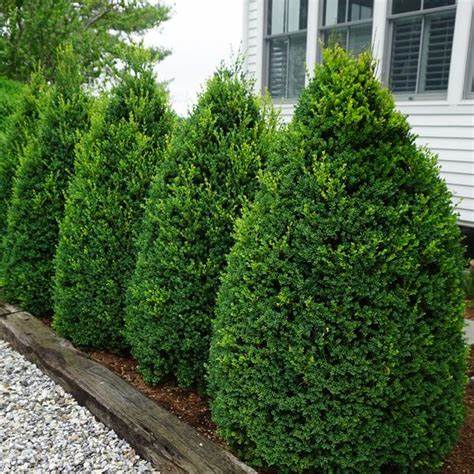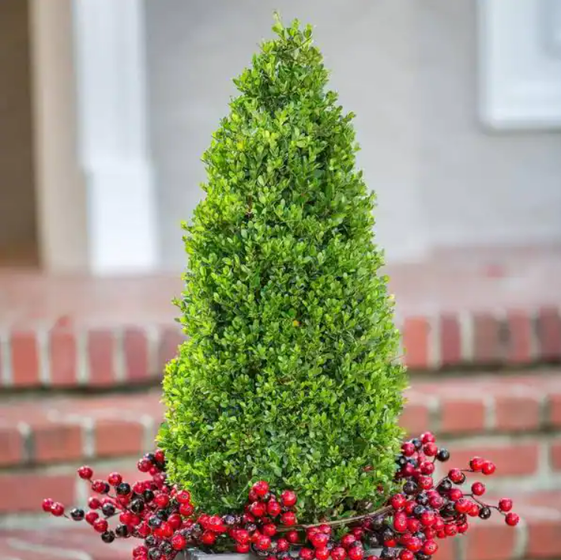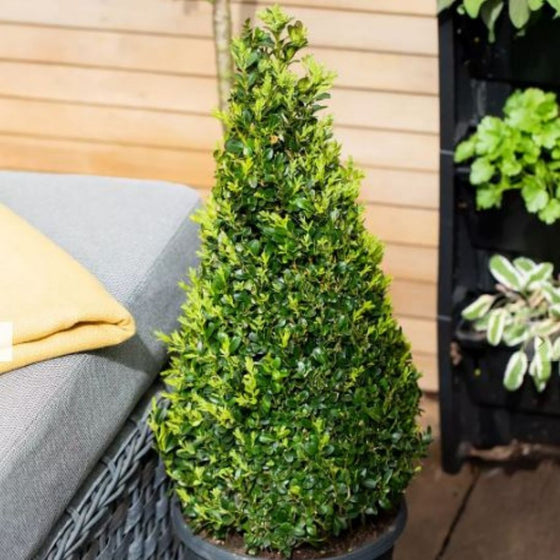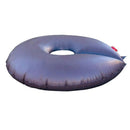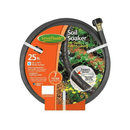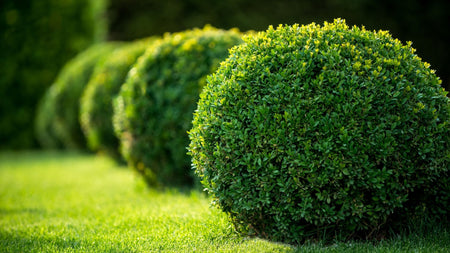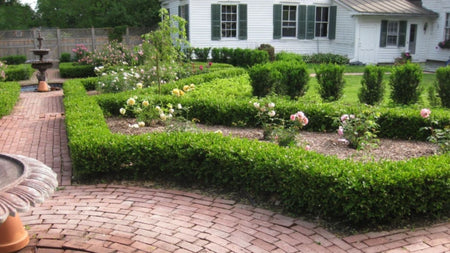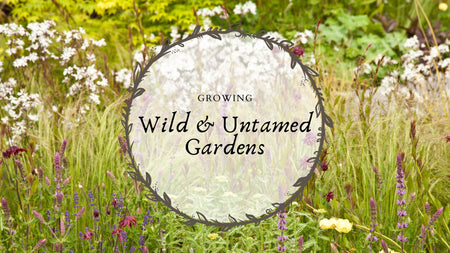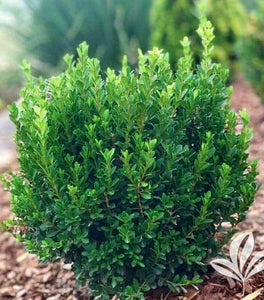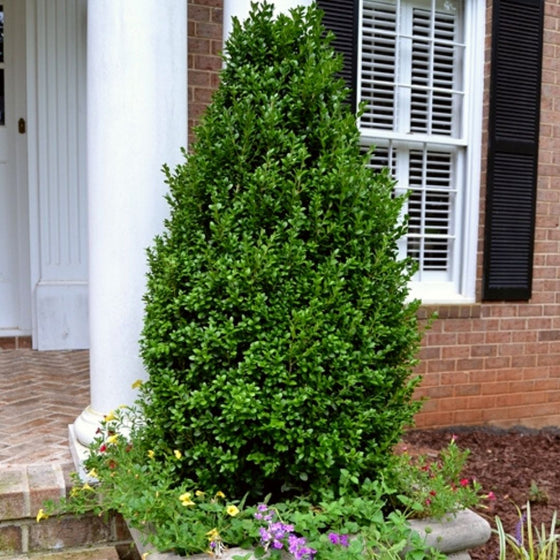
Images Depict Mature Plants
Pyramidal Boxwood for Sale
You have undoubtedly seen elegant evergreen shrubs trimmed into pyramid shapes if you've visited historic estates or public gardens. Ever since the common boxwood shrub was introduced into the American landscape, gardeners trimmed them into formal cone shapes.
Many spacious estate gardens include pyramidal boxwoods lining driveways and entry paths. This process takes time to turn small ball-shaped plants into this highly desirable form.
Let us save you time and effort. Our pyramidal-shaped boxwoods have been trained and trimmed into the iconic shape that discerning gardeners strive for. This process saves you years of time and effort.
Our pre-trimmed boxwoods are packed with lush, dense growth and will only need to be trimmed once per year to maintain their shape. The vibrant green color will draw attention to entry doors, patios, or decks. These boxwoods also look great in front of commercial entries or outdoor dining areas at restaurants and cafes.
Boxwoods have year-round appeal. The attraction doesn't have to stop because the growing season ends either. When most plants go into dormant states and lose their leaves in the winter months, boxwoods can be decorated with festive red bows, holly berries, or other seasonal ornaments.
Pyramidal American boxwoods are one of the hardiest boxwoods available. Even if you live in the northern part of the United States, you can still enjoy these boxwoods at your home or business. Buxus sempervirens was given the name of common boxwood, but there is nothing ordinary about the stellar beauty of this plant. They have been and remain a standout member of the boxwood family, and we're confident you'll adore the stately look and ease of care that these hardy evergreen shrubs will bring to your home for years and years.
Best grown in zones 5 through 9, this Boxwood shrub maintains glossy evergreen foliage throughout the year. Common Boxwoods thrive in sunny to partly shady locations with moist, well-drained soils. These requirements make them perfect candidates for porch pots or patio containers as well as in the landscape.
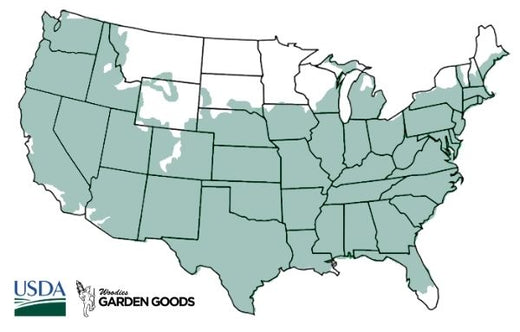
| Hardiness Zone: | 5-9 |
|---|---|
| Mature Height: | 10 to 12 Feet |
| Mature Width: | 4 to 6 Feet |
| Classification: | Evergreen shrub, Topiary |
| Sunlight: | Full sun to part shade |
| Habit: | Upright |
| Flower Color: | Inconspicuous |
| Foliage: | Dark green |
| Soil Condition: | Any well-drained soil |
| Water Requirements: | Water well until established |
How to Care for Pyramidal Boxwood
Be sure to read our planting instructions to ensure a healthy and happy plant for years to come!
How do I plant Pyramidal Boxwood Shrubs?
To plant Pyramidal Boxwood shrubs, start by selecting a location that offers partial to full sun and well-drained soil, as these shrubs thrive in both sunny and lightly shaded conditions. Begin by digging a hole that is twice as wide and as deep as the root ball to give the roots plenty of space to grow. Carefully remove the shrub from its container, loosen the roots, and place it in the hole. Ensure the top of the root ball is level with the surrounding soil. Backfill the hole with a mix of native soil and organic compost, tamping it down lightly to remove air pockets. Water thoroughly after planting to help establish the roots. Once your Pyramidal Boxwood is planted, apply a 2-3 inch layer of mulch around the base to help retain moisture and regulate soil temperature, but be sure to keep the mulch a few inches away from the trunk to avoid rot. Water deeply once a week during the first growing season to promote healthy root development. After the plant is established, Pyramidal Boxwood shrubs become drought-tolerant and require minimal care. With proper planting and maintenance, these shrubs will provide a formal, elegant structure to your landscape, with their dense, green foliage adding year-round beauty and texture.
How do I water Pyramidal Boxwoods?
To properly water Pyramidal Boxwood shrubs, focus on deep, infrequent watering, especially during their first growing season. Water the shrubs deeply once a week, ensuring that the soil is thoroughly moistened but not waterlogged. The top few inches of soil should dry out between waterings to prevent root rot, as Boxwoods prefer well-drained soil. During particularly hot or dry periods, increase the watering frequency slightly, especially when the shrubs are newly planted, to help them establish a strong root system. Deep watering encourages roots to grow deeper into the soil, promoting a healthier, drought-tolerant plant. Once established, Pyramidal Boxwood shrubs become more drought-tolerant and require less frequent watering. In most cases, natural rainfall will be sufficient to keep them healthy, and supplemental watering is only necessary during extended dry spells. To help retain moisture and reduce the need for watering, apply a 2-3 inch layer of mulch around the base of the shrub, keeping it a few inches away from the trunk to prevent rot. With proper watering practices, Pyramidal Boxwood shrubs will thrive, maintaining their lush green foliage and elegant form year-round.
How do I fertilize Pyramidal Boxwoods?
Fertilizing pyramidal boxwoods is crucial to ensuring their lush, vibrant growth and maintaining their iconic shape. The best time to fertilize boxwoods is in early spring, just as new growth begins, using a balanced, slow-release fertilizer specifically formulated for evergreen shrubs. Choose a fertilizer with an N-P-K ratio like 10-10-10 or 10-6-4 to promote healthy root development, foliage growth, and disease resistance. Spread the fertilizer evenly around the drip line of the boxwood, avoiding direct contact with the trunk, as this can cause root burn. Water the area thoroughly after applying fertilizer to help nutrients penetrate the soil and reach the roots effectively. To keep your pyramidal boxwoods thriving, consider conducting a soil test before fertilizing to determine nutrient deficiencies. Boxwoods prefer slightly acidic to neutral soil, with a pH range of 6.5 to 7.0. If the soil lacks necessary nutrients, supplement with appropriate amendments to optimize growing conditions. In addition to fertilizing in spring, you can apply a light dose of fertilizer in mid-summer to boost growth, but avoid late-season fertilization, as this can encourage tender new growth vulnerable to winter damage. By providing the proper nutrients, pyramidal boxwoods will maintain their dense foliage, vibrant green color, and elegant shape, enhancing your landscape year-round.

How do I Prune Pyramidal Boxwood Shrubs?
Pruning pyramidal boxwood shrubs is an essential task to maintain their iconic shape and promote healthy growth. Start by removing any dead, damaged, or diseased branches, which allows for better air circulation and reduces the risk of pest infestations. Use sharp, clean shears to trim the boxwood’s outer growth, following its natural pyramidal form. Aim to prune in late spring, after the last frost, or in early summer, as this minimizes the risk of frost damage and encourages new growth. When pruning pyramidal boxwood, be sure to make small, gradual cuts to maintain the desired shape without over-pruning, which can leave the shrub vulnerable. To achieve a dense, well-manicured look, prune pyramidal boxwood shrubs with an eye for symmetry, working evenly around the plant. It's important to cut more heavily near the top and lightly towards the bottom to ensure sunlight reaches all parts of the shrub, preventing thinning at the base. Regular pruning also encourages new shoots, making the boxwood appear lush and full. Avoid cutting into old wood, as boxwoods do not regenerate well from hard pruning. With consistent care and attention, pyramidal boxwood shrubs will retain their elegant, classic structure, making them a standout feature in any formal or cottage-style garden.

